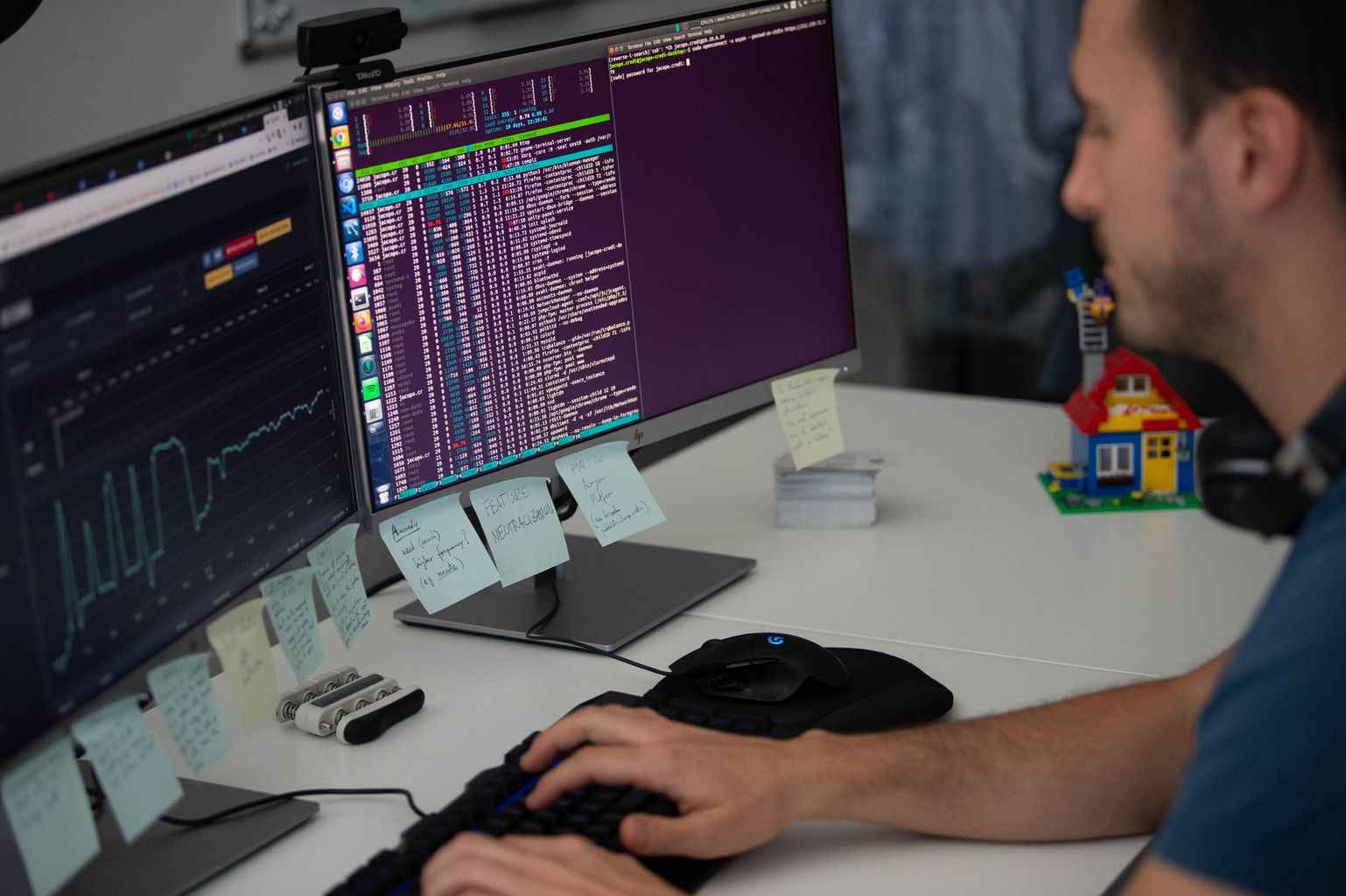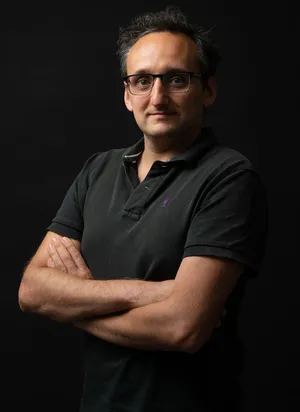FFplus Interview with Giacomo Barigazzi, Axyon AI

In this interview, we are hosting Giacomo Barigazzi, COO and Co-founder at the Axyon AI which is an Italian fintech company.
We discussed how Axyon AI is helping asset managers generate alpha – by identifying the stocks and commodities with the highest probability of outperforming the benchmark.
Mr Barigazzi also shares key insights from their successful participation in the FF4EuroHPC Business Experiment, along with practical advice for SMEs and startups aiming to leverage HPC and AI.

Giacomo Barigazzi, Head of Development at the Axyon AI (Copyrights: Axyon AI)
To start our interview, could you briefly introduce Axyon AI?
Giacomo:
Yes, of course. Axyon AI is a fintech company specialising in Artificial Intelligence. Within the AI space, we focus particularly on machine learning and deep learning, combined with High-Performance Computing, to generate alpha in the asset management sector.
By generating alpha, I mean supporting our customers by providing suggestions that help them outperform the market – for example, identifying the stocks or commodities with the highest probability of beating the benchmark. That is essentially what we do at Axyon.
Thank you for this insight. From your perspective, what are the most transformative trends currently shaping the future of the fintech industry? What challenges does the industry face today in terms of opportunities and disruptive technologies in the financial market?
Giacomo:
AI is by far the technology with the greatest impact and the greatest potential to change the entire ecosystem. Of course, there are many challenges, ranging from regulation to the need for explainability. These are all issues that must be addressed because while performance and accuracy are crucial, they are not enough on their own.
Yes. From challenges, let’s move on to your own experience where you have actually addressed some of these in fintech, particularly through your participation in the FF4EuroHPC business experiment. Could you briefly introduce your use case and the innovative solution you developed for it?
Giacomo:
Certainly. Let me start a little earlier. Since our inception as a company, we have viewed AI and High-Performance Computing as two of the key resources that we leverage to provide services to our customers. The other critical resource is, of course, data. Having access to a large volume of high-quality data, combined with advanced machine learning and deep learning technologies trained on HPC infrastructure, is our starting point.
Since 2016, we have partnered with research institutions such as CINECA here in Italy, which have helped us identify the most suitable technologies for the highly complex financial market – arguably one of the most complex systems in the world. We have carried out several projects co-funded by the European Commission and local government.
For the FF4EuroHPC project, specifically, we leveraged supercomputing infrastructure to build risk management features that allow us to provide customers not only with better performance in terms of higher returns, but also lower volatility – something crucial in asset management.
To give an example, the key metric that most people know in financial markets is the Sharpe ratio, which is returns divided by volatility. The aim is to maximise returns while minimising volatility. This was a major focus of the project. Another important element was expanding the investable universe we could cover, which required fully exploiting the HPC infrastructure provided by our partners, CINECA and the University of Modena. These two elements together enabled us to expand our target market, serve a larger number of customers – including smaller players – and reduce both computing and maintenance costs for our models and strategies.
Thank you very much for this valuable insight. Clearly, this was an important opportunity for your company across innovation, development, and business benefits, as well as collaboration with other organisations. You already mentioned CINECA – what other partners were involved in the project?
Giacomo:
The other main partner was the University of Modena, specifically its AI Research Centre. In this project, there were three official partners: ourselves as coordinator, CINECA as provider of the supercomputing infrastructure and expertise, and the University of Modena for the AI research component.
We have had a long-standing collaboration with the University of Modena. Our headquarters are based there, so it was a natural choice to engage with them. In this case, their role was to identify new technologies in the deep learning space suited to our business case – a crucial task given the pace of academic research. Every day new papers and methodologies are published, and it would be impossible for us alone to stay up to date with all of them. Having a research partner to guide us towards the most relevant advances, and to help implement them in practice, has been vital.
Thank you for clarifying. It’s clearly important to connect industry and research in order to create innovative ideas and ensure continuity in development. Coming back to your experiment, you developed what you call a “factory” of AI and deep learning models to support asset management. What business benefits has this brought you, and how has the experience continued to support your company after the project ended?
Giacomo:
That really gets to the heart of what we do as a company. Financial markets are extremely complex, fast-changing and unpredictable. Unlike other applications of deep learning – for example, facial recognition, where once you train a model it remains relevant for decades because human faces don’t change – in financial markets everything changes constantly, sometimes literally every second.
We cannot rely on a single “perfect” model. Instead, from the beginning, our approach has been to build a “factory” of AI models: an automated system that continuously trains, retrains, updates, and integrates new machine learning and deep learning technologies.
This strategy has proven correct. Over the past few years, we have improved and expanded this factory by introducing new features and approaches. So rather than producing one model, our core asset is this factory itself.
In the FF4EuroHPC project, we enhanced and extended the capabilities of the factory, enabling us to benefit from the results well beyond the project’s lifetime. Just as with earlier projects, the innovations have been fully integrated into our processes and continue to deliver value.
That’s very interesting. Let’s talk more about the technological side. How does HPC support your AI workflows – from model training to deployment? What computational challenges did you have to overcome during your experiment?
Giacomo:
Absolutely. Let me walk you through the model development pipeline and where HPC is essential.
First, we define the investable universe – the set of stocks our customers want us to focus on. Then we gather relevant input data from providers such as MSCI, Morningstar and Refinitiv. These are major players in financial data provision. We clean and prepare the data, and then begin developing the AI models.
This is where HPC comes in. Our aim is to identify patterns and correlations in the data to predict stock behaviour. To do this, we experiment with countless model architectures – changing the number of layers in the neural network, the number of neurons, activation functions, and testing different deep learning approaches such as recurrent neural networks, convolutional networks, and transformers.
From roughly 100,000 model architectures, we narrow down to around 10,000 models, and finally select about 50 to go live. The computational challenge of navigating this huge hyperspace of combinations is immense. Without HPC, it would literally take hundreds of millions of years to test them all.
Another challenge is scaling the investable universe. For example, analysing 50 stocks requires a 50x50 comparison matrix, but analysing the S&P 500 means a 500x500 matrix – the computational load grows exponentially. In this project, HPC allowed us to expand from smaller universes to hundreds of stocks, something that would have been impossible otherwise. Thanks to CINECA and the University of Modena, we were able to overcome this challenge.
So it was actually a huge effort – those are some very impressive numbers.
Giacomo:
Yes, absolutely. It was a huge effort. As always, we started out confident that everything would go smoothly, but of course, over the year and a half of the project, we encountered roadblocks and unforeseen problems that had to be solved. It required more effort and resources than originally planned, but since this work is at the very core of what we do, we were happy to commit those resources. Fortunately, this was also recognised and appreciated by the venture capital firms who invested in us after the project.
Let’s wrap up with some final thoughts. What advice would you give to other SMEs that have not yet explored the use of HPC or AI in their business?
Giacomo:
Starting with AI: most companies will be disrupted by AI within the next three years, and these disruptions rarely happen gradually – they tend to come suddenly. Companies need to embrace AI now to avoid being left behind.
I often use the example of early cars in Montana. Many horse-sellers claimed cars would never replace horses because they couldn’t work in the snow – yet today, cars dominate and horses are rarely used for transport. New technologies are always met with scepticism at first, but eventually they become indispensable.
AI is already disrupting markets and will continue to do so at speed. And when you talk about AI, you inevitably talk about HPC. You cannot train sophisticated AI models on a laptop. You need proper infrastructure. In highly competitive fields like finance, success isn’t about achieving perfect accuracy, but about being better than your competitors – and HPC provides that competitive edge.
People tend to overestimate what will happen in one year, but underestimate what will happen in five. I am convinced that within five years, AI will be used everywhere, and no serious company will be able to operate without it. My advice to SMEs is: don’t wait – start exploring now.
Watch the video interview here.
